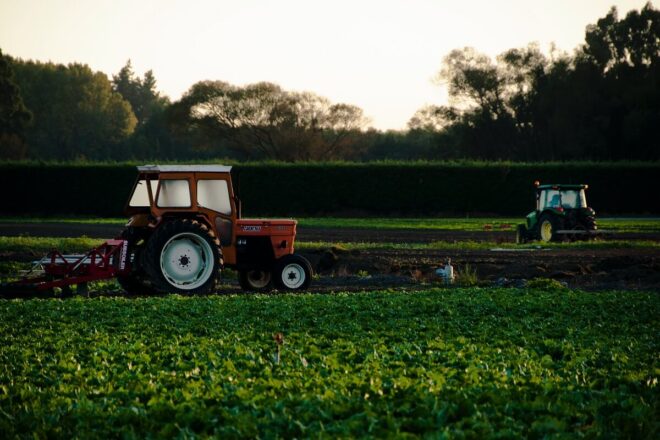
Global Agritecture Market is anticipated to grow at a CAGR of 10% to reach USD 7723 million by 2028 on account of increasing the yield of crops without any increment in the land area. Also, the subsistence crop production all year round regardless of the weather conditions is further creating a positive impact on the global agritecture market. Agritecture can be referred to as a fusion of agriculture with architecture. It can be employed within a building using vertical farming to intensify plant growth and green density.
Lack of Arable Land to Drive Agritecture Market
One of the most essential factors contributing to the expansion of the global agritecture market is the loss of fertile land. This can be ascribed to the development of domestic areas, and the rise in the number of metropolitan cities, and commercial places, amongst others making the cultivation of crops troublesome. The shrinkage of land can also be attributed to climate extremities, slope steepness, the rockiness of land, soil erosion, etc. Moreover, the growing use of agrochemicals increased deforestation and overgrazing activities, and a rise in the number of floods has led to land degradation and the formation of barren lands which are not suitable for cultivation. The increasing construction and mining projects also have had a negative impact on the quality of land and soil as well as the groundwater table. These factors are contributing to the increased adoption of agritecture practices across the globe.
The growing use of Advanced Technologies
Different developments are made to promote plant growth and a good environment for the crops so that when traditional farming is impractical inside or outside of corporate infrastructure, technological developments can help. One of the cutting-edge technologies used in the AgroTech structure, which lowers the cost of activities like vertical farming while also making it an effective kind of agricultural architecture, is light-emitting diode technology. Plant growth inside the infrastructure is aided by artificial illumination used in indoor agriculture.
The goal of automation in agritecture is to speed up time to market, cut expenses associated with production, distribution, and the environment, and standardize high quality. The Internet of Things (IoT) is now a widely used technology that supports plenty of sectors, including manufacturing, transportation, and agriculture. The agriculture industry has undergone a revolution with the help of IoT.
Growing Concerns about Aesthetic Looks & Increasing Awareness about Agritecture
The vertical farms also function in an aesthetic sense, producing a design element that not only adds depth to a room but also forms a substantial but not overpowering partition in the space. This is a choice that requires meticulous upkeep, but crop cultivation and harvesting must also be taken into account to achieve practical results.
The swift acceptance of agritecture can be owed to its benefit of offering aesthetic looks and a greener environment for the infrastructure. Several airports, railways, and metro stations are opting to install a vertical farm inside or outside their premises to grow plants which are actively driving the growth of the global agritecture market. The best-known example of this is the Jewel Changi Airport Garden in Singapore which grows plants on a gross floor area of 135,700 square meters.
Market Segmentation for Agritecture Market
The global agritecture market is segmented on the basis of integration, structure, application, and regional distribution. Based on integration, the market is differentiated into indoor and outdoor. On the basis of structure, the market is bifurcated into retrofitting, extension, and new building. Based on application, the market is further fragmented into commercial and residential. The market analysis also studies the regional segmentation to devise regional market segmentation, divided into North America, Europe, Asia-Pacific, South America, and Middle East & Africa.
Company Profiles
Agritecture Consulting LLC, AeroFarms LLC, Obyashi Corporation, Freight Farms, Inc., Grow Pod Solutions, LettUs Grow Ltd., and FarmBox Foods, are among the major market players in the global agritecture market.
| Attribute | Details |
| Base Year | 2022 |
| Historical Data | 2018 – 2021 |
| Estimated Year | 2023 |
| Forecast Period | 2024 – 2028 |
| Quantitative Units | Revenue in USD Million, and CAGR for 2018-2022 and 2023-2028 |
| Report Coverage | Revenue forecast, company share, growth factors, and trends |
| Segments Covered | · Integration· Structure· Application |
| Regional scope | North America; Europe; Asia Pacific; South America; Middle East & Africa |
| Country scope | United States, Canada, Mexico, France, United Kingdom, Netherlands, Sweden, Germany, Italy, Spain, China, Japan, Singapore, South Korea, Australia, India, Brazil, Argentina, Colombia, UAE, Saudi Arabia, South Africa |
| Key companies profiled | Agritecture Consulting LLC, AeroFarms LLC, Obyashi Corporation, Freight Farms, Inc., Grow Pod Solutions, LettUs Grow Ltd., FarmBox Foods |
| Customization scope | 10% free report customization with purchase. Addition or alteration to country, regional & segment scope. |
| Pricing and purchase options | Avail customized purchase options to meet your exact research needs. Explore purchase options |
| Delivery Format | PDF and Excel through Email (We can also provide the editable version of the report in PPT/Word format on special request) |
Report Scope:
In this report, the global agritecture market has been segmented into the following categories, in addition to the industry trends which have also been detailed below:
- Agritecture Market, By Integration:
- Indoor
- Outdoor
- Agritecture Market, By Structure:
- Retrofitting
- Extension
- New Building
- Agritecture Market, By Application:
- Commercial
- Residential
- Agritecture Market, By Region:
- North America
- United States
- Canada
- Mexico
- Europe
- France
- United Kingdom
- Netherlands
- Sweden
- Germany
- Italy
- Spain
- Asia-Pacific
- China
- Japan
- Singapore
- South Korea
- Australia
- India
- South America
- Brazil
- Argentina
- Colombia
- Middle East & Africa
- UAE
- Saudi Arabia
- South Africa
- North America
